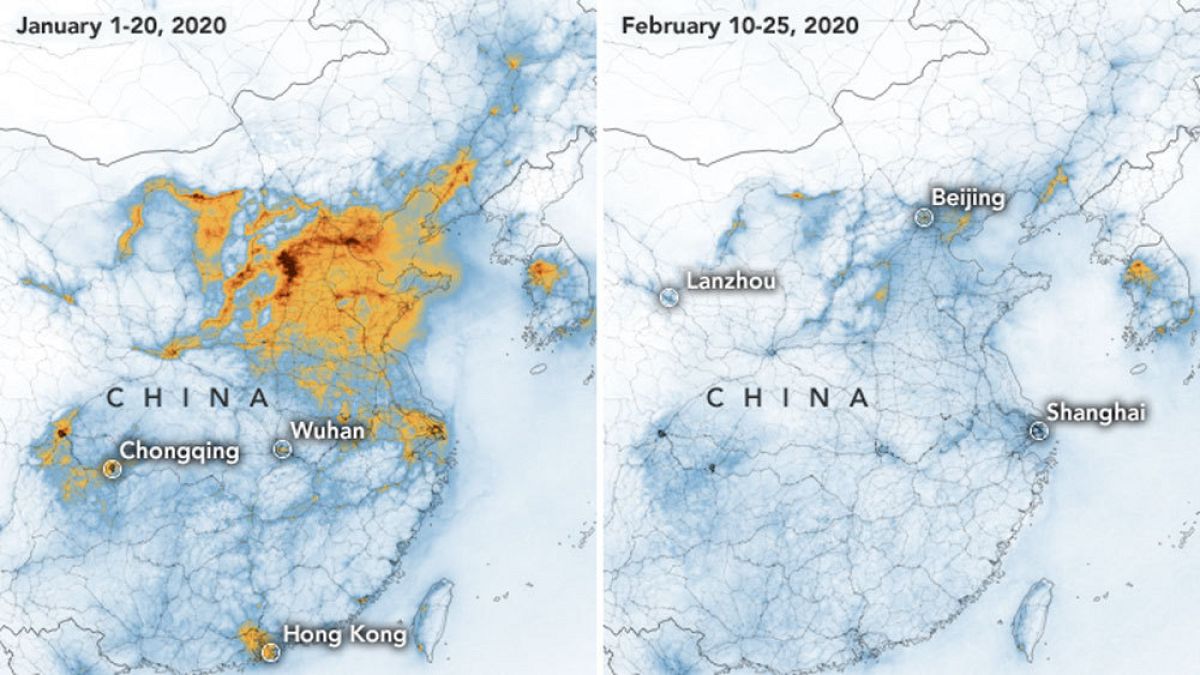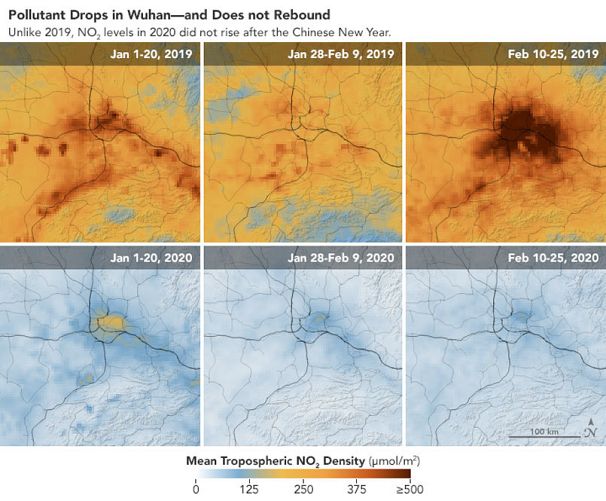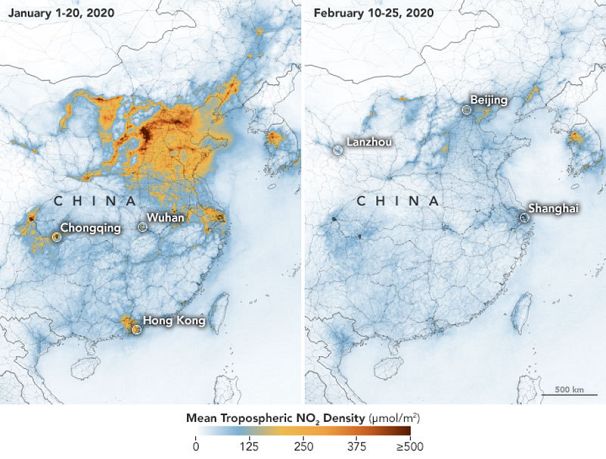The satellites of the European Copernicus agency have registered an unusual drop in nitrogen dioxide levels, due to the COVID-19 outbreak.
The decline in economic activity in China is now visible from space.
Many experts had already observed a reduction in gas emissions in the country, but now the satellites of the European Copernicus agency have registered an unusual drop in nitrogen dioxide levels. The data was collected by NASA's ground observation team.
Air quality experts have focused their observations on nitrogen dioxide (NO2), which is only detected near the sources of emissions: mainly the burning of fossil fuels from road traffic and industry.
In the midst of the Chinese New Year holiday period, it was difficult to know if it was a reduction linked to the restrictions of the coronavirus epidemic or simply the "truce" of activity of the holidays.
Then also, the meteorological factor has a lot of influence on the concentrations of this gas. To avoid it as much as possible, they have measured on a longer period of a dozen days.
Now scientists are sure that the activity has not resumed as usual after the New Year holidays.
"There is always a general slowdown at this time of year," explained Barry Lefer, a NASA air quality scientist. "Our long-term Ozone monitoring data allow us to see if these amounts are abnormal and why."
This trend is confirmed in other big cities. In the second half of February, there was hardly no activity.
"This is the first time I have seen such a dramatic fall in such a large area for a specific event," said Fei Liu, a researcher on air quality at NASA's Goddard Space Flight Center.
Liu commented that there was a fall of NO2 in several countries during the 2008 crisis, but it was a gradual phenomenon.
He also cited a decrease in Beijing during the Olympic Games, although pollution levels recovered after the Olympics ended.
Regarding the typical fall of the New Year holidays, Fei Liu explains that "this year, the reduction is more significant than in previous years and has lasted longer," he said.
"It doesn't surprise me because many cities in the country have taken steps to minimise the spread of the virus."
To perform these measurements, NASA's air quality experts have used the Ozone Monitoring Instrument (IMO) of NASA's Aura mission.
Launched in 2004, this mission has been collecting global data on NO2 and various air pollutants for more 15 years.
Experts have also used data from the Sentinel 5 satellite of the European Copernicus ground observation program.
Researcher Simon Gascoin has put it into graphics. In Beijing and Hubei province, emissions have clearly fallen in February, although they are beginning to recover.
This visualisation created in mid-February by scientists from the Finnish meteorological agency also shows an important difference in NO2 emissions.
An impact on the world's economy
The fear of a coronavirus domino effect caused a week of global stock losses last week, the biggest decline since the 2008 financial crisis.
The specialised page Carbon Brief had already published a report with the reduction of CO2 emissions based on the decline in coal consumption. He estimated that emissions could have been reduced by 25% below usual.
The Zero Hedge economics blog also gave data on the decline in economic activity.
Experts warned that in addition to financial markets, the epidemic is already having effects on the real economy.
The sector most directly impacted is tourism, but little by little the reduction in activity is felt in various industries such as the automotive industry.


